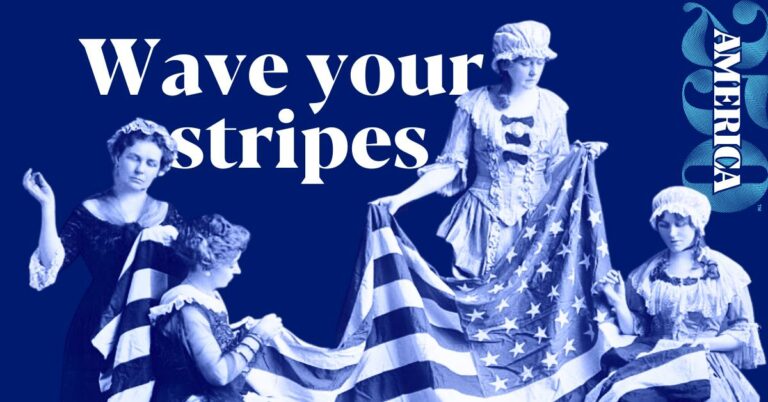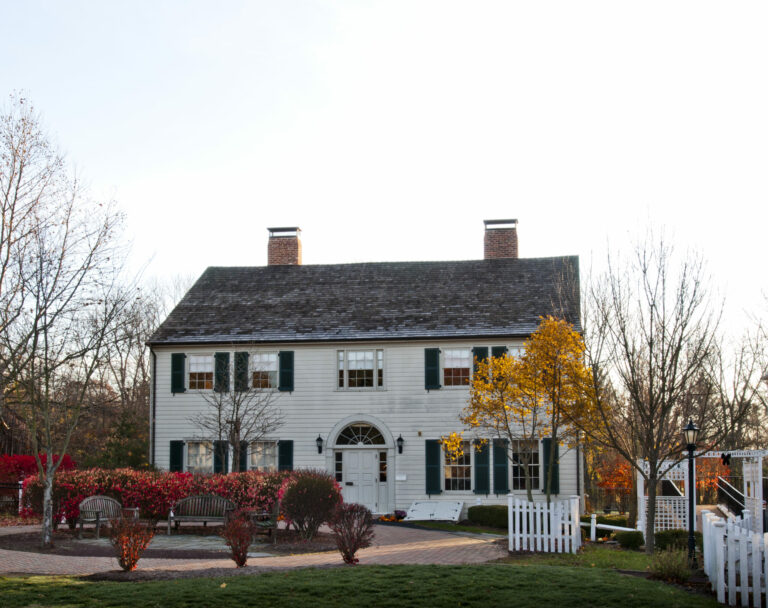Find Black History Events Throughout New Jersey
Many sites throughout New Jersey are hosting Black History events in February. Events include lectures, workshops, living history re-enactors, and more. View events specific to black history here, or check out our calendar for more special events throughout the state here.
Explore Black History Month with the Revolutionary Neighbors
New Jerseyans from all walks of life were faced with difficult choices during the American Revolution. People of African descent who lived in the state were no different, though the issue of slavery made their options even more complicated. At the time, only a small percentage of black New Jerseyans were not enslaved. Black men fought on both sides during the war for independence. Though General George Washington originally forbade the enlistment of black soldiers, he changed his mind after British leaders promised freedom to enslaved African Americans who joined Loyalist military forces. Chronic shortages of willing white recruits also influenced Washington’s decision.
Why did African American New Jerseyans fight in the Revolution? Their reasons are as varied as their situations. Some served the Continental Army or local militias as substitutes for their owners, in exchange for freedom after the war. Freed black men fought according to their conscience, either in support of the young United States or Great Britain. Others ran away to join the army of their choice. These Revolutionary Neighbors shine a light on some of these decisions.
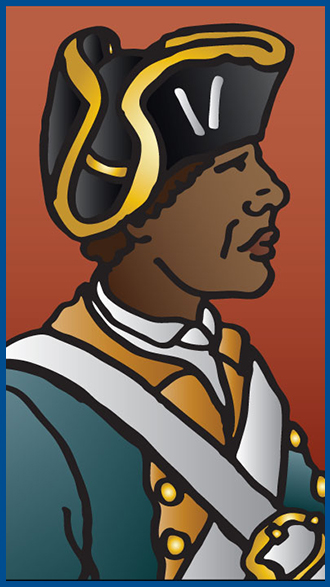 Oliver Cromwell
Oliver Cromwell
1752 – 1853
I was born in the village of Black Horse, Burlington County and was raised as a farmer. My ancestry was mixed and some records list me as mulatto while others have me as Indian. I may have been a mix of European, African, and Indian. After the Revolution broke out, I enlisted on February 1, 1777 for the duration of the war in the Second New Jersey Continental Regiment. Recruits of color were not always welcomed into the army, but I was allowed to enlist and took great pride in my service. While in the Second New Jersey I served at the battles of Short Hills, Monmouth, Brandywine, Springfield, and Yorktown. I received my discharge on June 5, 1783 and it noted I had earned the “Badge of Merit” for my six years of faithful service. In 1818, the United States Congress passed a law providing for pensions to former Continental soldiers who were in need. I made my first application statement explaining my service on April 2, 1818 and then filed a second document on May 27, 1820 to prove that I needed the pension. Fortunately, I was awarded a pension of $96 a month. In 1850, I told the census taker that I was 97 years old and when the census taker asked me my occupation I proudly told him it was “drummer in the Revolution.” I loved to tell stories about the Revolution. I died on January 24, 1853 and was buried in the cemetery of the Broad Street Methodist Church.
[toggle title_open=”Close” title_closed=”Click here for the full biography” hide=”yes” border=”yes” style=”default” excerpt_length=”0″ read_more_text=”Read More” read_less_text=”Read Less” include_excerpt_html=”no”]
I was born in the village of Black Horse, now Columbus, Burlington County and lived with my maternal uncle, Thomas Hutchens where I was raised as a farmer. My ancestry was mixed and some records list me as mulatto while others have me as Indian. I may have been a mix of European, African, and Indian.
When the Revolution broke out I served in the militia and then on February 1, 1777, a month after the Battle of Princeton, I enlisted for the duration of the war in Captain James Lawrie’s Company of the Second New Jersey Continental Regiment commanded by Colonel Israel Shreve. Recruits of color were not always welcomed into the army, but I was allowed to enlist and took great pride in my service. At the Battle of Short Hills in June 1777, Captain Lawrie was wounded and taken prisoner. He died while in captivity in New York. Lieutenant Aaron Lane took over for several months until Captain Nathaniel Bowman took over command of our company from him. Not many records survive, but I appear as a private in his company on payrolls from May 1777 through February 1778. In February 1778, while the army was at Valley Forge I was absent from my company on furlough. My name also appears on a muster for November and December 1779. Later in the war, when our regiment was reduced in size to a battalion, I served under Captain Dayton.
While I always told people that I fought in the Battles of Trenton and Princeton, and described them with enthusiasm, there is no documentary evidence that I did and both battles occurred before I enlisted in the Continental Line. While serving in the Second New Jersey we were engaged at the battles of Monmouth, Brandywine, Springfield, and Yorktown. I always told people after the war that I saw the last man killed at Yorktown. I continued to serve until the army was disbanded and received my discharge on June 5, 1783. My discharge paper noted that I had earned the “Badge of Merit” for my six years of faithful service. The Badge of Merit was designed personally by General Washington and was a purple cloth heart with the word “Merit” on it. This was one of the first awards given to ordinary soldiers like me and could be awarded for exceptional bravery or for extended faithful service, as in my case.
After the war I returned to Burlington and raised my family. In 1818, the United States Congress passed a law providing pensions to former Continental soldiers who were in need. I made my first application statement explaining my service on April 2, 1818 and then filed a second document on May 27, 1820 to prove that I needed the pension. I reported that all I owned were two iron pots, a tea kettle, four chairs, six plates, knifes, and forks, a bed and bedding and my wearing apparel. I was 67 years old and as a common laborer I was unable to earn a livelihood due to my age. My 25 year old daughter Elizabeth, who lived with me, was crippled and unable to assist me with income. I also had two young sons, Isaac and Robert aged 12 and 10, who were too young to earn income. Fortunately, I was awarded a pension of $96 a month.
In 1850, I told the census taker that I was 97 years old and was living with my daughter Elizabeth and my grandson son James and his family. When the census taker asked me my occupation I proudly told him it was “drummer in the Revolution.” There is no other evidence to prove this and Thomas Pitts was the drummer for Captain Lawrie’s and Captain Bowman’s company. But, I loved to tell stories about the Revolution. A reporter from the Burlington Gazette came to interview me on May 24, 1852 and I told him it was my one hundredth birthday. We talked about the war and the reporter noted that my eye brightened “at the name of Washington” and in all my conversations I exhibited “that deepseated attachment” to my commander, “for which all soldiers of the Revolution are celebrated.” I told the reporter that my discharge paper had been taken from me when I applied for a pension and telling him that renewed my mourning for it and my eyes became tearful.
I died on January 24, 1853 and was buried in the cemetery of the Broad Street Methodist Church. In 1914 the postmaster of Burlington wrote to the Commissioner of Pensions for information about me because there was a movement in Burlington to erect a monument to my memory. He noted that “those of our citizens who remember him speak of him as a very respectable man.” Unfortunately, nothing came of it and no monument was erected.[/toggle]
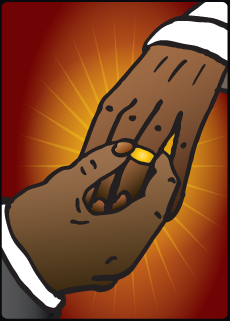 Jacob Francis
Jacob Francis
1754 – 1836
Born in Amwell Township, Hunterdon County in 1754, as a young child I was bound by my mother, a colored woman, to an Amwell farmer. My time was resold several times until I was about 13 years old and my time was purchased by Joseph Saxton who took me to New York, St. John in the Caribbean, and finally Salem, Massachusetts. When my servant time expired in January 1775 I stayed in Massachusetts and enlisted in the 16th Continental Regiment, using the name Gulick after one of my previous owners.
After the British army left Boston, we went to New York and were in the battles of Long Island and White Plains before retreating to Pennsylvania across from Trenton. We crossed back to New Jersey with the army on Christmas nightto march on Trenton. When my enlistment was up several days after the Battle of Trenton I went home to Amwell and found my mother living, but in ill health. She informed me that my family name was Francis so I was afterwards known as Jacob Francis. Obeying the militia law, I enrolled in the Third Hunterdon militia regiment and served alternate months on active duty for the rest of the war. One time during a skirmish I was captured by some Hessians but wasable to make my escape, laying in some bushes until the British were all gone, and rejoined my company.
After the war I purchased and married Mary, a woman of color, in September 1789 at the home of her former master. I died on July 26, 1836.
[toggle title_open=”Close” title_closed=”Click here for the full biography” hide=”yes” border=”yes” style=”default” excerpt_length=”0″ read_more_text=”Read More” read_less_text=”Read Less” include_excerpt_html=”no”]
I was born in Amwell Township, Hunterdon County on January 15, 1754 and as a young child I was bound by my mother, a colored woman, to an Amwell farmer. My time was resold several times to other men until I was about 13 years old when my time was purchased by Joseph Saxton. Mr. Saxton took me to New York as his servant, then to St. John in the Caribbean, and finally Salem, Massachusetts. In Salem Mr. Saxton sold my time to Benjamin Deacon with whom I was to serve 6 years, until I was 21. When my servant time expired in January 1775 I stayed in Salem and after the battles of Lexington and Bunker Hill I enlisted at Cambridge about the last of October in the16th Continental Regiment commanded by Colonel Paul Dudley Sergent. When I left New Jersey with Mr. Saxton I did not know my family name, but called myself Jacob Gulick (or Hulic) after one of my several previous owners, so I enlisted with that name. My regiment remained in the neighborhood of Boston until the British were driven out of the city and sailed to Halifax. After the British army left, my regiment was ordered to New York so we marched to New London and took ship to New York. The British were on Long Island at the time and I was one of about 200 men detailed from my regiment to join our army on the island. We found our army in retreat and we retreated with it back to Manhattan. After a while we were ordered to White Plains and joined General Washington’s army there. After the battle I stood sentinel that night in a thicket so near the British lines that I could hear the Hessians in their camp between a quarter and half a mile from me. We were ordered to Peekskill where we crossed the river and marched to Morristown.I heard guns firing when our General Lee was taken prisoner the night we lay near Baskinridge. We continued on, crossed the Delaware River, and were billeted a few miles below Coryell’s Ferry until we crossed with the army to march on Trenton on Christmas night in General Sullivan’s Division. I fought in the battle and after it my regiment was detached to ferry Hessian prisoners across to Pennsylvania. About noon it began to rain very hard and it was quite dark by the time we finished. I slept that night in an old mill house above the ferry on the Pennsylvania side. When my enlistment was up a few days later I was permitted to return home, but with only three month’s pay rather than the seven and a half I was due. I also did not receive a written discharge at that time. We were told to go to Peekskill at a certain time to receive the rest of our pay and discharges. I immediately went from Trenton to my home in Amwell where I found my mother living, but in ill health. I remained with her and when it was time to go to Peekskill I gave up going and never did receive my pay or discharge. My mother informed me at this time that my family name was Francis and I then went by the name of Jacob Francis. Obeying the militia law, I enrolled in the company of Captain Philip Snook of the Third Hunterdon militia regiment. I served alternate months on active duty for several years. We were generally sent to posts opposite Staten Island near Elizabethtown. One of my off months I served as a substitute for a person who could not go out and he gave me $75 Continental money to take his place. One time our company marched when there was a British attack on the militia at Elizabethtown. During the skirmish I was captured by some Hessians and marched under guard with the British army through Newark. I was guarded by four men who left me when some of our militia fired on them and I made my escape, laying in some bushes until the British were all gone, and rejoined Captain Snook. I also served under Captain Snook at the Battle of Monmouth, although we were not actively engaged. I continued to turn out for frequent militia tours for the rest of the war. After the war I purchased and married Mary, a woman of color, in September 1789 at the home of her former master. We were married by Cato Finley, Dr. Finley’s slave, who often solemnized the marriages of colored people. Together we had several children and about 1800 moved to Flemington. In the 1830s I applied for and was granted a pension by the United States government for my service. I died on July 26, 1836.[/toggle]
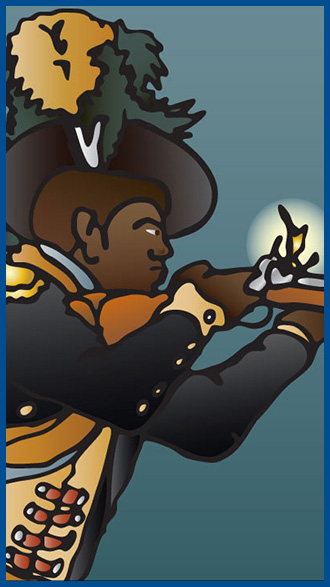 Colonel Tye
Colonel Tye
1754 – 1780
When the Revolution broke out I was one of many New Jersey slaves who were agricultural laborers and lived independently in small cabins. In Monmouth County, unrest among us slaves prompted the county’s white leaders to argue against manumission and slaves being out at night. They also confiscated arms from both free blacks and slaves. This may have prompted me to run off. As a Loyalist freedman, what others called a runaway slave, I turned to raid warfare as a way of making a living. In 1779, Loyalist raids against New Jersey rebel areas increased in frequency and intensity. A year later, I joined a growing group of runaway slaves based at Refugeetown, a settlement on Sandy Hook near the lighthouse and British naval base and became the leader of a new Loyalist group called the Black Brigade. Under my leadership, the Black Brigade launched a string of raids in which we captured horses, plundered houses, and captured rebels. During one raid, I took “several Negroes and a great deal of stock” making people think that I was either liberating other African Americans, or, potentially, selling them as war booty. On September 1, I attempted my boldest raid, marching ten miles inland to Colts Neck to capture Captain Joshua Huddy. In the action on that raid I was shot in the wrist and died shortly thereafter from lockjaw caused by the wound. The Black Brigade continued on, but was less effective after my death. Black Loyalists continued to raid rebels into 1782.
[toggle title_open=”Close” title_closed=”Click here for the full biography” hide=”yes” border=”yes” style=”default” excerpt_length=”0″ read_more_text=”Read More” read_less_text=”Read Less” include_excerpt_html=”no”]Some historians have speculated that I was a runaway slave who was born in Virginia and came north to New Jersey as part of the Ethiopian Brigade, a black Loyalist corps raised in 1775 by Lord Dunmore, Virginia’s last Royal Governor. But it is more likely that I was born in Monmouth County. I was probably the slave named Titus, who ran away from John Corlies of Shrewsbury on November 8, 1775. Corlies was a Quaker, and one of the few in his meeting who refused to free his slaves. When I ran off, Corlies offered a reward for my return. His advertisement described me as “about 21 years of age, not very black, [and] near 6 foot high.” It also suggested that I would likely change my name. I was one of many New Jersey slaves who were agricultural laborers and lived independently in small cabins. In Monmouth County, unrest among us slaves prompted the county’s white leaders to argue against manumission and slaves being out at night. They also confiscated arms from both free blacks and slaves. I was likely among the slaves that participated in the unrest, and likely felt the sting of the crackdown. This may have prompted me to run off.
In the early years of the American Revolution, hundreds of slaves from New York and New Jersey responded to British promises of freedom by going behind British lines and becoming Loyalists. The British attempted to organize us into segregated units—the Negro Horse, the Negro Pioneers, etc.— and I likely served in one of these. But most of these units had short tenures. Some of us freedmen, what others would call runaway slaves, became sailors or laborers while others, like me, turned to raid warfare as a way of making a living.
In 1779, Loyalist raids against New Jersey rebel areas increased in frequency and intensity. Many of the new raiders operated outside of British control and I likely participated in some of these raids. A year later, I joined a growing group of runaway slaves based at Refugeetown, a settlement on Sandy Hook near the lighthouse and British naval base. In spring 1780, I became the leader of a new Loyalist group at Sandy Hook called the Black Brigade.
Under my leadership, the Black Brigade launched a string of raids. A newspaper reported my June 9 raid against Middletown saying, “Ty, with his party of about 20 Blacks and whites, last Friday afternoon took off prisoners Capt. Barnes Smock and Gilbert Van Mater; at the same time spiked-up the iron four pounder [the militia’s signal cannon] at Capt. Smock’s house but took no munitions. Two of the artillery horses and two of Capt. Smock’s horses were likewise taken off. The above mentioned Ty, who wears the title of Colonel, commands a motley crew at Sandy Hook.”
On June 22, I led a larger raid and the newspaper reported that, “A party of the Enemy, consisting of Ty with 30 Blacks, thirty six Queens Rangers and thirty Refugee Tories landed at Conkaskunk. They, by some means, got in between our scouts undiscovered and went to Mr. James Mott, Sen., plundered his & several neighbor’s houses of almost everything in them and carried off several.” During this raid, I took “several Negroes and a great deal of stock” making people think that I was either liberating other African Americans, or, potentially, selling them as war booty.
I launched other raids, most of which escaped documentation, but two of the raids are documented. On June 25, I raided Shrewsbury and skirmished with the township militia, and, on August 16, I led a raid that succeeded in carrying off Lt. Col. John Smock. By this time, I was so feared that the Middletown militia was reluctant to turn out against me. A local militia return dated August 17 showed that only two of 17 listed militiamen answered a call to march after me.
On September 1, I attempted my boldest raid, marching ten miles inland to Colts Neck to capture Captain Joshua Huddy. A newspaper reported that I and two white Loyalist officers, with 72 men, attacked Huddy’s tavern. He resisted us for some time, but we eventually came in close and set fire to the tavern. We captured Huddy and sacked his tavern, but the delay allowed the rebel militia time to assemble. During the resulting skirmish, Huddy escaped. The newspaper further reported “their brave negro Tye was wounded.” I was shot in the wrist and died shortly thereafter from lockjaw caused by the wound.
The Black Brigade continued on, but was less effective after my death. Black Loyalists remained active in raid warfare in New Jersey into 1782. The remaining members of the Black Brigade and their families (49 men, 23 women, 6 children) were resettled in Canada in 1783.[/toggle]

